SPAIN
Madrid

Madrid
Madrid
Madrid was named the capital of Spain by King Philip II in 1561 and still it is today. Madrid is the largest city in Spain with more than 3.2 million inhabitants and an area of 607 km². Moreover, it is the Spanish city that is famous and infamous for its football clubs (Real Madrid and Atlético de Madrid) and the traditional bullfights that are held there. Furthermore, Madrid is the center of Spanish politics and the financial world. There are many attractions in Madrid such as beautiful, old buildings and museums. Madrid's nightlife and catering industry also have a good reputation.
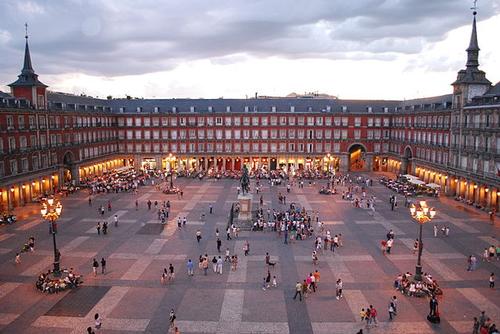 Plaza Mayor MadridPhoto: Sebastian Dubiel CC 3.0 Germany no changes made
Plaza Mayor MadridPhoto: Sebastian Dubiel CC 3.0 Germany no changes made
| advertisement |
| Hotels Madrid |
Location
Madrid is located in the center of Spain on the Spanish plateau, south of the Sierra de Guadarrama mountains. The city is more than 650 meters above sea level and the Manzanares River flows through the city. The city consists of 21 official city districts that consist of different neighborhoods.
Weather
Madrid has a continental climate with influences from the Mediterranean climate from the surrounding areas. This means that it can get quite cold in winter and that the temperature can reach 40°C in summer. Madrid's high location also has an effect on the city's climate. At night it often cools down considerably, which makes the summer evenings and nights in Madrid very pleasant; ideal for an evening on a terrace.
History
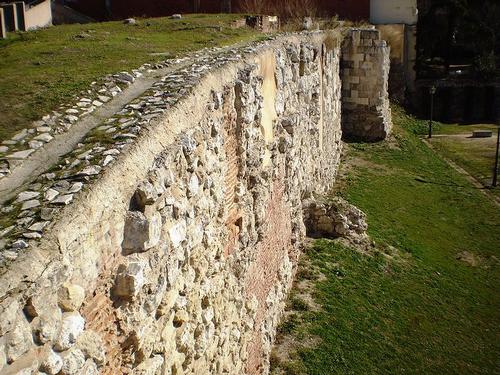 Moorish wall 9th century MadridPhoto: Esetena CC 4.0 International no changes made
Moorish wall 9th century MadridPhoto: Esetena CC 4.0 International no changes made
The Romans settled in Madrid in the 2nd century, from where they were expelled by the barbarian Germanic tribe of the Visigoths in the 5th century. The Moors then took possession of Madrid. In the 9th century, Mohammed I ordered the construction of a small palace, which is now the Palacio Real. In 1085 the Moors were expelled by Alfonso VI of Castile.
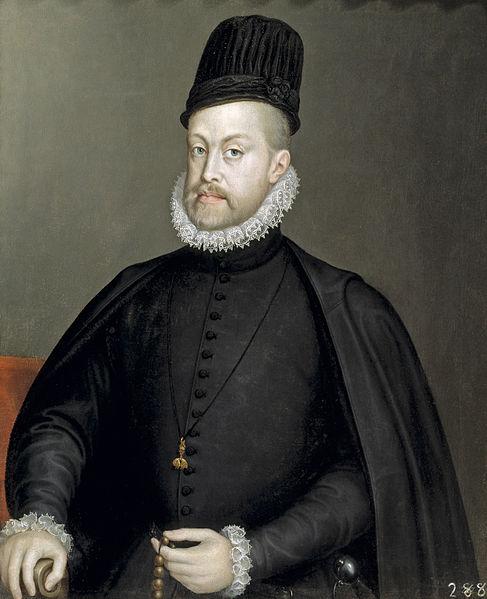 Philip II MadridPhoto: Public domain
Philip II MadridPhoto: Public domain
In the 14th century, a fire destroyed most of the city and Madrid was rebuilt by Henry III of Castile. Philip II settled in Madrid in 1561. The city was declared the capital. Madrid experienced steady growth. In the 18th century the Bourbons came to power. Many buildings were built with the support of France, including the Royal Palace and the Prado district. In 1873, the first republic was proclaimed in Madrid by Emilio Castelar.
The second republic followed in 1931, which came to an end together with the Spanish Civil War in 1939. This three-year war claimed the lives of more than a million people. Franco again proclaimed dictatorship, which only disappeared with the arrival of Juan Carlos in 1975.
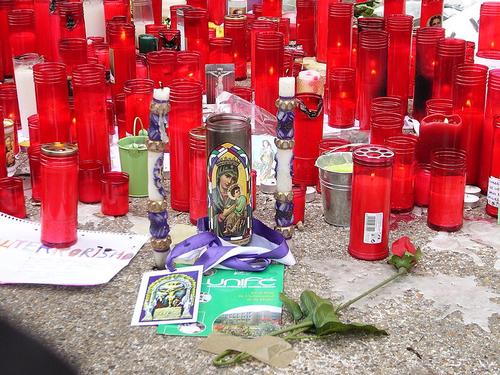 Candles after attack at metro station Atocha MadridPhoto: Manuel González Olaechea y Franco CC 3.0 no changes made
Candles after attack at metro station Atocha MadridPhoto: Manuel González Olaechea y Franco CC 3.0 no changes made
The economic growth of the 1980s and 1990s raised Madrid's position as an important industrial, cultural, economic and technological center. The terrorist attacks of 11 March 2004 in several Madrid metro stations were initially considered to be the work of ETA. It later emerged that these attacks, like those of September 11, 2001, in New York, were the work of Al-Qaeda.
Sights
Madrid is overflowing with exceptional sights. Actually too many to mention and therefore only a few attractions will be explained here where you absolutely must go when you visit Madrid.
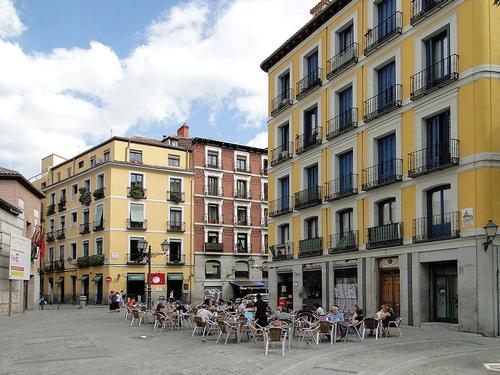 Plaza San Andres MadridPhoto: Bernard Gagnon CC 3.0 Unported no changes made
Plaza San Andres MadridPhoto: Bernard Gagnon CC 3.0 Unported no changes made
First of all, the La Latina district. This is one of the many pleasant neighborhoods in Madrid. Take a tour of the neighborhood and enjoy the beautiful buildings. Especially on Sundays it is pleasantly busy in la Latina. All Madrid people sit on the terraces sipping their wines and eating the tastiest snacks. Sit here for a few hours and enjoy yourself just by watching the people walk by. In la Latina, visit the Plaza de la Paja and the Plaza San Andrés; beautiful and impressive squares. There are also various terraces on the squares where you can enjoy the sun or shade.
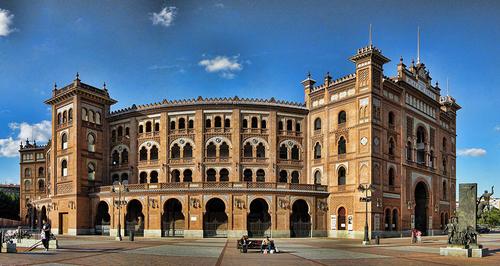 Plaza de Toros Las Ventas MadridPhoto: Spettacolopuro (CC BY 2.0) no changes made
Plaza de Toros Las Ventas MadridPhoto: Spettacolopuro (CC BY 2.0) no changes made
Madrid's Plaza de Toros Las Ventas is the most important bullfighting arena in the world. The arena was officially opened in 1934 and is a wonderful illustration of the neo-Mudéjar architecture. This style came back into fashion in the 19th century and goes back to 13th and 14th century design. The style is characterized by the unique use of brickwork and vibrant ceramic tiles. Opposite the arena is a square with a statue in memory of the bullfighter José Cubero, with the inscription 'a bullfighter dies and an angel is born'. Next to the stables is the Museo Taurino, about the history of bullfighting and its celebrities.
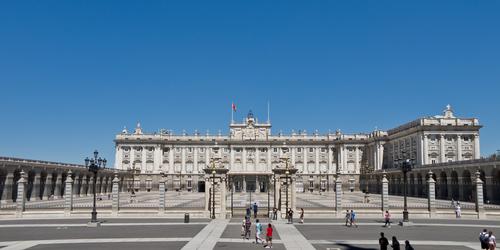 Royal Palace MadridPhoto: Carlos Delgado CC 3.0 Unported no changes made
Royal Palace MadridPhoto: Carlos Delgado CC 3.0 Unported no changes made
The Royal Palace is also referred to as the Palacio de Oriente (Palace of the East). When the old Muslim fortress of Madrid (El Alcázar) was destroyed by fire in 1734, Felipe V took the opportunity to build a lavish royal palace in 1737. The royal palace was designed by Juan Bautista Sacchetti and was not completed until 1764. Francisco Sabatini and Ventura Rodríguez also contributed to the venture. The royal family does not use the 2,800-room Palacio Real to live in, but the palace is sometimes used for festive occasions. You can visit the palace and see 50 of the most impressive rooms, including the Hall of the Halberdiers, the Official Chamber, the Throne Room, the apartments of Carlos III, the Salón de Gasparini (Gasparini Room), the Comedor de Gala ( Dining room). You can also visit the Farmacia Real (Royal Pharmacy), the Armería Real (Royal Arsenal) and the Sala de Porcelana (Porcelain room).
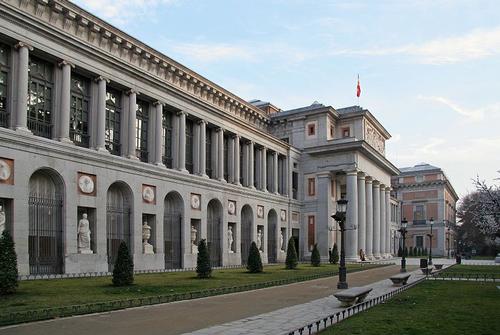 Prado MadridPhoto: Brian Snelson CC 2.0 Generic no changes made
Prado MadridPhoto: Brian Snelson CC 2.0 Generic no changes made
A visit to Museo del Prado is a must during a city trip to Madrid. This is one of the most famous museums in Europe with a collection of 8,600 paintings, not even including all drawings, coins and medals in the collection. The works of the greatest Spanish painters, such as Goya, El Greco, and Velázquez, hang there. You can also find work by painters from other countries including Raphael, Jeroen Bosch (garden of earthly delights), Rubens and Rembrandt. The Museo del Prado is so large that it takes more than one visit to fully appreciate its versatile collection.
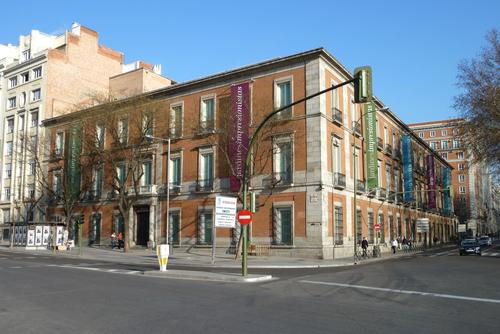 Thyssen-Bornemisza MadridPhoto: Luis García CC 3.0 Unported no changes made
Thyssen-Bornemisza MadridPhoto: Luis García CC 3.0 Unported no changes made
The Thyssen-Bornemisza Museum contains the exceptional art collection of Baron Heinrich Thyssen. Thyssen decided to move his collection from Switzerland and although he received generous offers from many countries, he decided to move it to Madrid. The museum is housed in one of the most beautiful buildings in the city, the neoclassical Palacio de Villahermosa. There are both permanent and changing exhibitions in 51 rooms. More than 800 works of art are on display, dating from the 17th, 18th and 19th centuries, by some of the world's most famous artists, such as Constable, Cranach, Holbein, Raphael, Rubins, Monet, Van Gogh, Cézanne and Picasso. This great art gallery is well worth a visit. Paintings of particular note include a portrait of Henry VIII by Holbein, 'The Lock' by Constable and 'Les Vessenots' by Van Gogh. There are also various sculptures, ceramics, jewelry and carved ivory statues.
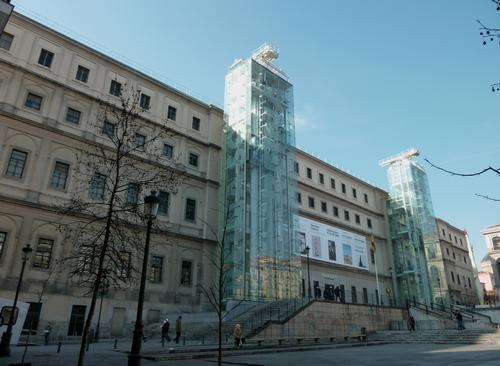 Reine Sofia Museum MadridPhoto: Luis García CC 3.0 Unported no changes made
Reine Sofia Museum MadridPhoto: Luis García CC 3.0 Unported no changes made
The Reine Sofia museum is located in a renovated 18th century public hospital. It is huge and was opened as a center for the arts in 1990. Its popularity has grown since its opening and is now one of Europe's most vibrant centers for contemporary creativity. More than 3,000 paintings came from the collection of the old museum of contemporary art and these form the backbone of the permanent collection. Highlights include a Picasso, a Dali and a Surrealism room, all with beautiful displays of paintings, including many famous. Perhaps the most famous painting is Guernica, which Pablo Picasso made to illustrate the madness of the Spanish Civil War.
In addition to these three top museums, there are dozens of other fascinating museums in Madrid.
Tips
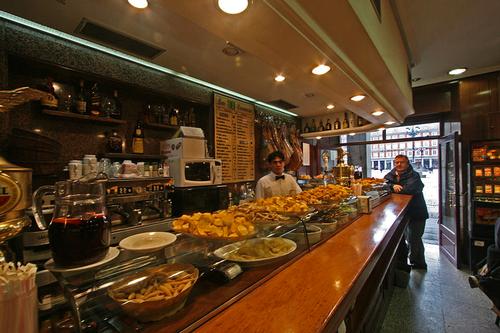 Tapas bar MadridPhoto: Brian Snelson (CC BY 2.0) no changes made
Tapas bar MadridPhoto: Brian Snelson (CC BY 2.0) no changes made
In Madrid you can really enjoy delicious food on every corner of the street, especially tapas. Tapa means lid and this name is derived from the lid on the glasses on which the tapas were once served. The lid on the glasses served as a protector against flies and other insects. You simply eat tapas at the bar with a nice glass of Spanish wine or a beer. Each tapas bar has its own specialties. Well-known tapas are fresh olives, tortillas (kind of omelette), pinchos morunos (spicy sausage) and caracoles (snails).
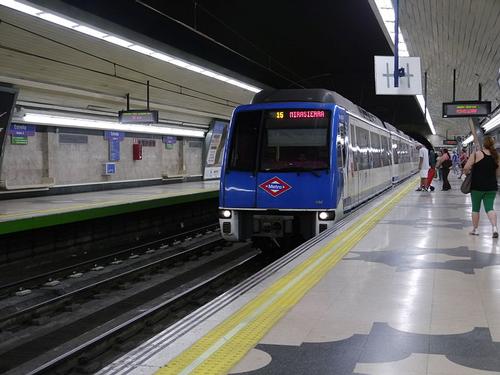 Metro MadridPhoto: Braniff747SP CC 3.0 Unported no changes made
Metro MadridPhoto: Braniff747SP CC 3.0 Unported no changes made
Madrid has a gigantic metro network with a length of 287 kilometers and 295 metro stations. It is even one of the largest metro networks in Europe. The metro is a fast and cheap way to get around the city. Unfortunately, it is a way of transport where you will see very little of the city.
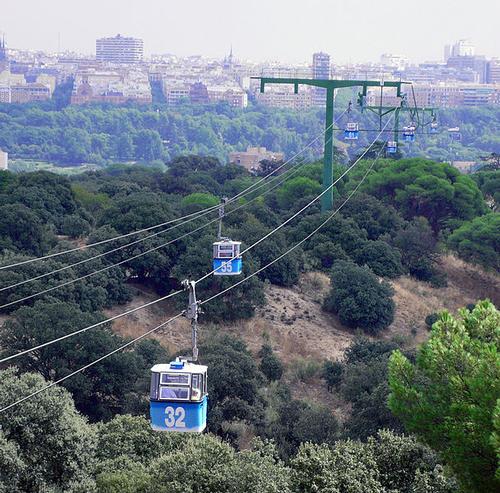 Teleférico MadridPhoto: FDV CC 3.0 International- no changes made
Teleférico MadridPhoto: FDV CC 3.0 International- no changes made
Another, perhaps much nicer, means of transport is the "teleférico". This is a funicular that runs above the city. From the cabins you have a beautiful view over Madrid. The route includes the Manzanares river and the Parque del Oeste, one of the many beautiful parks in Madrid.
Useful links Madrid
BBC Country ProfilesWorld Fact Book Explore all Countries
How to call
Last updated June 2025
Copyright: Team - The World of Info